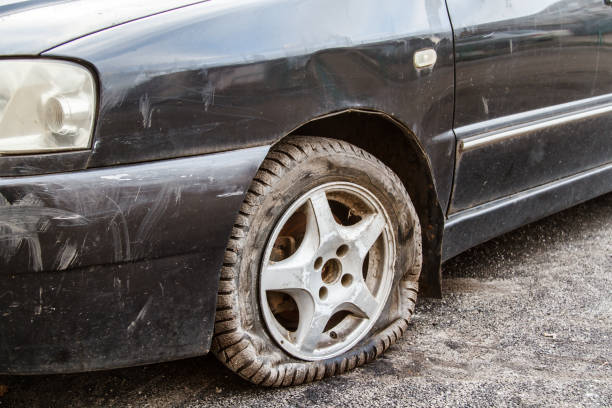Blog > 2017 > August > How Defective Tire Cause Car Accident
How Defective Tire Cause Car Accident
August 2, 2017
It’s obvious that a lot of car accident today are blamed on the ‘other driver’, even while he/she may be the cause to some extent, have you thought of other factors too? If defective tire also contributes to major car accidents? Cases involving defective tire calls for immediate action not only against the driver but also the tire manufacturer, the vehicle company, and many others who to some extent might have a degree of liability or responsibility for the tires. This is important so that everyone involved get to account for their share of damages sustained on the vehicle and the passengers involved.
Now to the big question; how and why do tires fail?
There are numerous factors to be considered in a tire defect case. Also known as tire detreat or tire delamination, it’s caused when the bottom layer of steel belts separates from the second layer of the outer threads and steel belts. Simply put; tire delamination occurs when a large strip of tread and sometimes with smaller pieces separates from the tire while in use. A defective tire will significantly reduce the driver’s ability to gain control over the vehicle and at the end result into a rollover or collision. Most drivers are ignorant of the fact that tires become more susceptible to tread separation as they age, even while its not in use and sitting on a tire rack, the aging process still causes thread separation.
If a car repairer installs a tire that is over six years old, and eventually the tire fails, leading to an accident causing injury, the repairer that installed the tire together with the shop may also be liable for any damages caused. What I’m trying to point out here is that it’s highly important that you have an idea of how the tire was installed on the vehicle in order to better ascertain liability.
Tire Blowouts
While some people prefer to call tread separations “blowouts” which is known to be a sudden loss in air pressure. However it’s important for you understand the difference as tire delamination does not really or necessarily entail the loss of air pressure. Even after the tire loses its tread, it can still retain its air pressure throughout the accident.
Other parties that may be at fault
Adding to the potential product liability claim against the manufacturing company , investigating actions will be in place to ascertain if there are other companies or individuals who might have neglected their role to maintain or install defective tires. We already talked about installing old tires, there might also be situations of improper installation with respect to tire size, tire/rim combination and rim size. Also the installer might have failed to inform the customer/driver about signs of impending failure of the tire he fixed.
Proving tire defects – Use of experts and investigations
Speaking in terms of the chemistry and other related science involved, one isn’t wrong to conclude that tire cases are uniquely technical. They are expert-intensive cases, meaning that only an expert will be able to determine if and why the tire failed. What is investigated first in a potential tire defect case are the aspects of the accident; there’s need to be sure if a defective tire have contributed to the cause of the accident. If we are right with that, then we move on to carry out further investigations; we check the history of the tire design, method of installation, storage and all other contributing factors. This is going to give us headlight on how to identify those responsible for injuries and damages caused, and of course make them pay for the cause.
